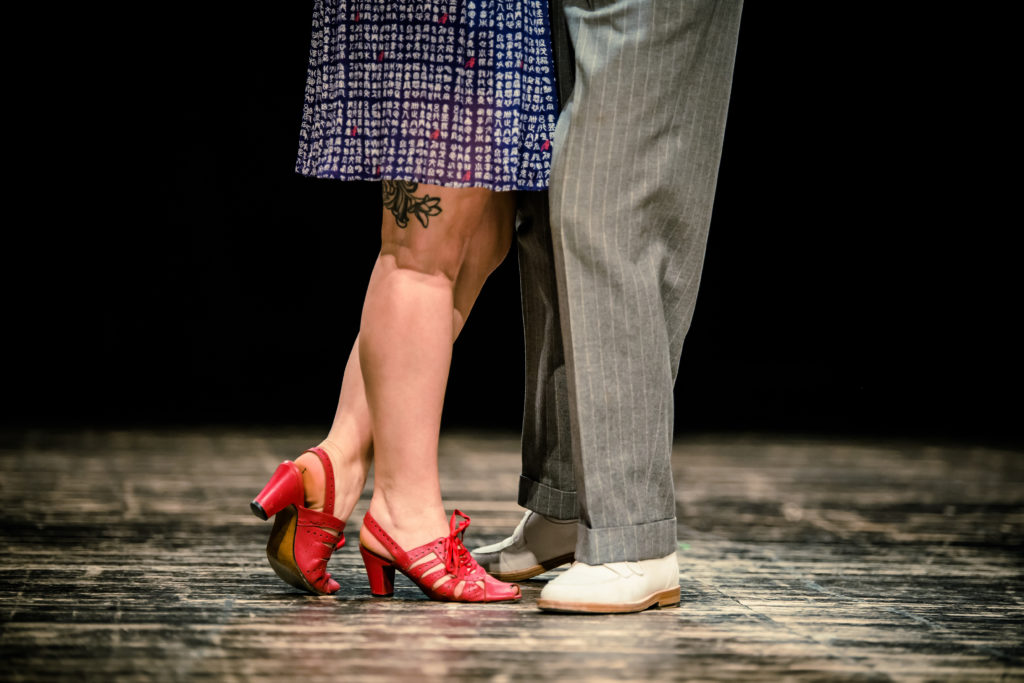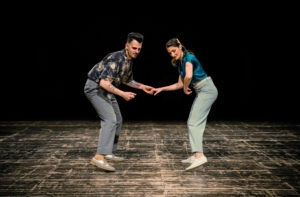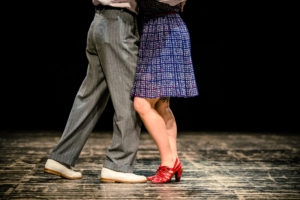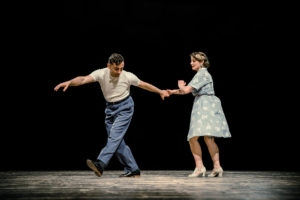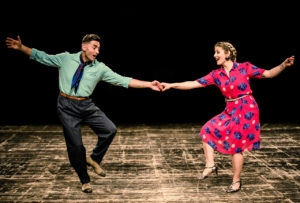Balboa is a form of Swing dance that originated in Southern California in the 1920s and 1930s and went on to flourish in the 1930s and 1940s. As a branch of Swing it bears certain similarities to the Lindy Hop and Charleston, however its close connection between partners, and small defined footwork distinguishes this dance as the most elegant and sophisticated of the partnered Swing dances.
Origins and History of Balboa
The precise origins of Balboa are a little hazy; as it was danced to Jazz and Swing music and evolved in the late 1920s and early 1930s, it is impossible not to make links to the Charleston, however original dancers of the day have also mentioned being influenced by older ballroom dances such as the Foxtrot and the Rhumba. Unquestionably however, the dance has its roots in Southern California.
At that time, the Lindy Hop (which originated in Harlem, New York) still wasn’t danced on the West Coast, and so the young dancers in Southern California put together their own lively moves to dance to Swing music with rotations, twists and kicks, and a reasonably loose connection between partners. Back in the day, this dance would simply have been called ‘Swing’ (later on it would come to be known as ‘SoCal Swing”, or ‘LA Swing’). This interpretation of ‘Swing’ would then go on to evolve into the dance we know today in the Balboa peninsula of Newport Beach, from which it takes its name
Characteristics and variations of Balboa
Balboa is generally categorized by two different styles: Pure Balboa (or Pure Bal), which is danced exclusively in a closed position with a full connection (chest-to-chest) at all times; and Bal-Swing, which mixes the closed position with moves ‘out of hold’, opening and extending connection between partners to facilitate turns, twists and other variations. Here’s a look at them in more detail:
Pure Bal
‘Swing’ dancers dancing in venues such as the Balboa Pavilion and the Rendezvous Ballroom were constricted space-wise as the dance floors were so crowded, in fact some venues even banned certain exuberant moves from lively dances like the Charleston entirely. As such, dancers were forced to dance much closer together and reduce the size of their steps in order to be able to dance in a more confined space, and thus ‘Pure Bal’ was born. Still today, Pure Bal is danced in an upright position with chest-to-chest contact between leader and follower that is never broken. The dance is essentially quite simple, and not very showy (Pure Bal is not often considered a ‘performance’ dance), however the fun is in the complicity between lead and follow, and the possibilities of playing with footwork and rhythm variations. As the dance is so compact and the steps are so small, Pure Bal is well-suited for dancing to faster tempos, as well as more mid-tempo and slower rhythms.
Bal Swing
Soon enough Pure Bal became popular as a dance form in itself, and not just a reaction to the space on the dancefloor. It was danced at other events and venues and the dance’s popularity spread. Over time though, in moments where the dance floor was not so crowded, and also just out of a desire to spice up the dance a little, some dancers began to incorporate more elaborate variations into the dance. Chest-to-chest connection was broken in order to enable turns, twists, spins, kicks, and more besides! This dance, which combines the chest-to-chest contact and footwork pattern of Pure Bal with moves and variations in an open position is known as ‘Bal Swing’. Back in the day this too would just have been called ‘Swing’; however the terminology that we use today helps differentiate dance styles and in this case, understand their history.
How to dance Balboa
Although Balboa can be danced in more than one way, whether you are dancing Pure Bal or Bal Swing, the good news is that the basics are the same. And it is precisely these basics that establish the dance’s style, rhythm, and identity. In Balboa, steps are very small, in fact sometimes they resemble a ‘shuffle’ of the feet, and connection is paramount; without good connection between partners it would be extremely difficult to pick up on the body language and small shifts of weight that are essential in communicating the lead. Traditionally (as with most partner dances) the lead is performed by a man and the follow by a woman. Often followers opt for a small heel when dancing Balboa as it can help to keep their body weight in a ‘forward’ position, which in turn can help maintain connection throughout the dance.
Basic steps
The basic steps are formed of a sequence of steps danced over 8 counts. The sequence is exactly the same for leaders and followers, however in ‘reverse’ in order for the couple to be able to maintain connection; i.e. if the leader takes a step back, the follower must take a step forward in order to maintain connection. If both leader and follower took a step back, connection would be lost, and if both leader and follower took a step forward at the same time, one would tread on the other’s toes!
Here is the basic footwork pattern with the leader stepping backwards to start:
| Beat | Leader | Follower |
| 1 | Left foot back | Right foot forward |
| 2 | Right foot back | Left foot forward |
| 3 | Left foot forward | Right foot back |
| 4 | Hold (up or down) | Hold (up or down) |
| 5 | Right foot forward | Left foot back |
| 6 | Left foot forward | Right foot back |
| 7 | Right foot back | Left foot forward |
| 8 | Hold (up or down) | Hold (up or down) |
Remember, the steps are small! Once you’ve mastered these basics, the world of Balboa is your oyster!
Summer Jamboree courses
Learning steps by reading or watching online tutorials may be helpful, but nothing beats the real thing! Why not take a look at our Summer Jamboree courses of Balboa!

Learn How To
Take a look at our Dance Academy.
Start from scratch or reignite your passion for swing with internationally renowned teachers.
Ideal music
As a dance of the Swing era, it follows that Balboa is incredibly well suited to Swing and Jazz music. And as it is such a compact dance, it is also possible to dance to faster tempos, in fact some events even have competitions that crown the couple able to dance to the fastest of fast music! Balboa isn’t exclusively for rapid rhythms however, and both Pure Bal and Bal Swing are equally adaptable to slower and softer music, that allows couples to enjoy the close contact without getting so out of breath!
Differences between Balboa and Lindy Hop
Despite evolving at around the same time, and being danced to similar (if not the same) music, the conditions under which the dances developed differed greatly, and this had a direct impact on the dynamics of the two dances. Lindy Hop originated as a street dance in Harlem in large open spaces accessible to the many, and allowing its dancers plenty of freedom of movement. Balboa on the other hand, originated in crowded Californian ballrooms where dance etichette was dictated by the venues, and dancers were limited as to both the space they could use and the steps they could do.
Aesthetically, Balboa is more elegant and sophisticated than Lindy Hop, and allows dancers to have fun and communicate creatively without compromising good dance floor etichette.
Concluding thoughts
Historically Balboa never achieved the fame that Lindy Hop experienced, however thanks to the much appreciated efforts of several incredibly passionate dancers in the 1980s and 1990s, Balboa is still around today, and in fact has a thriving world-wide community that continues to grow year by year. It is extraordinary that after almost 100 years, this dance is still as charismatic and enjoyable and alive as ever before. So what are you waiting for?! Get moving, get dancing, get fit! Get out there and see just how much good dancing can do for your body, mind and soul!


